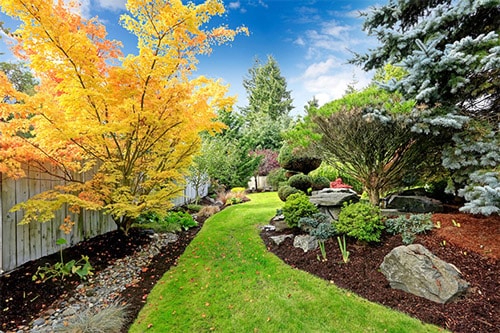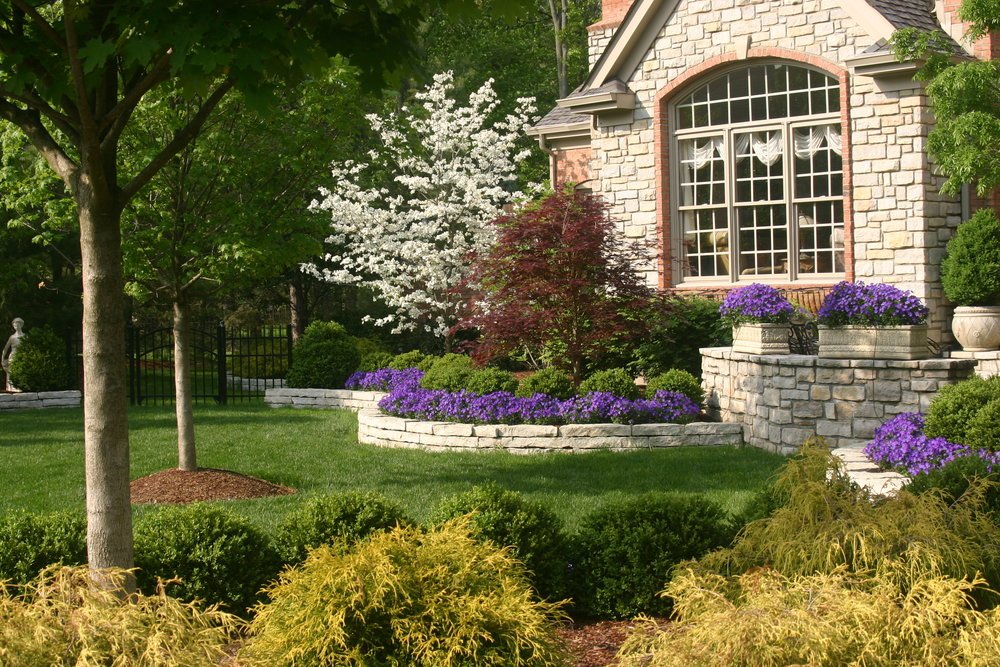Revealing Outside Beauty: Ogden Edge Design Company Trademark Landscapes
Revealing Outside Beauty: Ogden Edge Design Company Trademark Landscapes
Blog Article
Changing Your Landscape With Lasting Design
With the growing issue for environmental sustainability, several house owners are currently looking for ways to transform their landscapes right into environment-friendly sanctuaries. Lasting style not only helps to lower the adverse effect on the atmosphere but additionally uses various benefits for the home owners themselves. By including environment-friendly design aspects, selecting indigenous plants, and applying water preservation strategies, one can produce a greener and extra sustainable landscape. However just how exactly can one achieve this? In this conversation, we will check out the various advantages of sustainable landscape design, dive right into the methods to include environmentally friendly style elements, and share tips and techniques for preserving a lasting garden. If you're looking to change your landscape into a lasting oasis, maintain reading to discover the secrets to achieving a greener and much more environmentally pleasant exterior room.
Benefits of Sustainable Landscaping
Lasting landscape design uses countless benefits for both the environment and building owners. Among the key advantages is water preservation. By including drought-tolerant plants and efficient irrigation systems, sustainable landscape design minimizes water usage dramatically. This not just assists to save a priceless resource however additionally lowers water bills for homeowner.
One more benefit of lasting landscape design is the reduction of chemical usage. Typical landscape design typically relies upon plant foods and pesticides, which can damage the setting and human wellness. In contrast, sustainable landscape design techniques focus on natural bug control techniques and organic plant foods, minimizing the requirement for unsafe chemicals.

Last but not least, lasting landscape design can raise building value. A well-designed lasting landscape not only improves the aesthetic allure of a building but likewise demonstrates a dedication to ecological duty. This can bring in potential purchasers and tenants who value sustainable methods, leading to greater building demand and value.
Integrating Eco-Friendly Style Elements
By integrating environmentally friendly layout components, building owners can improve the sustainability of their landscapes while minimizing their ecological effect. Environment-friendly layout components concentrate on using resources effectively, lowering waste, and promoting biodiversity. One vital element is water conservation. Mounting rainwater harvesting systems and using drip watering can dramatically lower water usage. Native plants should additionally be focused on in landscape design, as they are adapted to the neighborhood climate and require less water and upkeep. Furthermore, integrating sustainable materials is crucial. Making use of recycled or reclaimed products for hardscaping not only minimizes waste but additionally adds a special aesthetic to the landscape. An additional vital component is energy effectiveness. Installing solar-powered lights or making use of low-energy LED lights can lessen power consumption. Last but not least, developing environment for wild animals is an important green design aspect. By consisting of functions such as bird feeders, insect hotels, and native growings, homeowner can draw in and support a varied series of wild animals. Including these environment-friendly layout aspects not only profits the environment yet additionally produces a attractive and lasting landscape for homeowner to appreciate.
Choosing Indigenous Plants for a Sustainable Garden
When creating a sustainable garden, one essential facet to take into consideration is the option of native plants. Indigenous plants are those that normally happen in a certain region or ecological community and have adapted to the regional environment, soil conditions, and wild animals. By picking indigenous plants for your garden, you can create a low-maintenance and sustainable landscape that profits both the setting and the regional environment.
Native plants have actually evolved with time to be fit to the neighborhood conditions, making them extra resistant and less depending on pesticides, plant foods, and too much watering. They additionally supply habitat and food sources for regional wildlife, such as bees, birds, and butterflies, which are essential for pollination and biodiversity.
When selecting native plants for your yard, it is very important to consider elements such as sunlight needs, soil kind, and water needs. Seeking advice from and investigating with regional nurseries or gardening professionals can assist you recognize the indigenous plants that are best fit for your certain area.
Along with their environmental benefits, native plants can likewise include appeal and diversity to your yard. They are available in a variety of sizes, shapes, and shades, permitting you to produce a unique and visually attractive landscape.
Water Preservation Strategies for a Greener Landscape
To develop a more lasting and environmentally-friendly garden, carrying out water preservation Going Here strategies is necessary for a greener landscape. Water is a precious source, and as our populace expands and environment change magnifies, it ends up being progressively essential to conserve water in our landscapes.
One efficient water preservation method is using compost. Applying a layer of mulch around plants and in garden beds aids to preserve wetness in the dirt, decreasing the demand for constant watering. Mulch additionally assists to subdue weed development, which can compete with plants for water.
Another method is making use of drip watering systems. Unlike standard lawn sprinkler that spray water right into the air, drip watering supplies water straight to the roots of plants, decreasing evaporation and water waste. Trickle watering systems can be quickly installed and readjusted to satisfy the details water requirements of different plants.
Rainwater harvesting is one more useful strategy for water preservation. By gathering rainwater from roofing systems, rain gutters, and downspouts, you can keep it in barrels or storage tanks for later usage in sprinkling your yard. This not just minimizes the need for local water however likewise makes certain that rainwater, a complimentary and natural resource, is put to great usage.
Lastly, correct upkeep of irrigation systems is vital for water preservation (Ogden Edge Design Company). have a peek at this site On a regular basis checking and fixing any type of leaks or broken sprinkler heads can prevent water loss and guarantee that water is being used effectively
Preserving a Lasting Yard: Tips and Tricks
Executing proper maintenance techniques is necessary for keeping a lasting garden. By adhering to a few pointers and tricks, you can ensure that your garden remains healthy, vibrant, and eco-friendly.
One of one of the most vital elements of maintaining a lasting garden is proper watering. By sprinkling your plants deeply and less regularly, you can encourage deep origin growth and minimize water waste. Additionally, making use of a drip irrigation system or rain harvesting can further preserve water sources.
Routine weeding is an additional vital maintenance method. Weeds compete with your plants for nutrients and water, so it's important to remove them immediately. Consider making use of organic mulch to learn the facts here now subdue weed growth and preserve moisture in the dirt.
Composting is an exceptional means to recycle natural waste and enrich your garden soil. By developing a compost pile, you can transform cooking area scraps, yard trimmings, and other organic products into nutrient-rich garden compost. This will certainly not only reduce waste but additionally improve soil health and fertility.

Regular pruning and correct plant care are additionally essential for maintaining a lasting garden. Pruning assists advertise healthy and balanced growth, enhance air flow, and stop the spread of diseases. In addition, supplying ample sunshine, dirt nutrients, and defense from severe climate condition will certainly assist your plants prosper.
Conclusion
In conclusion, lasting design in landscaping provides countless advantages, such as conserving all-natural sources, minimizing air pollution, and creating a much healthier setting. By integrating green style components and selecting native plants, individuals can produce a sustainable garden that supports neighborhood biodiversity and needs less maintenance. Applying water preservation methods additionally adds to a greener landscape. In general, preserving a lasting yard needs cautious preparation and continuous commitment, but the rewards are well worth the effort.
By integrating environmentally friendly layout components, choosing indigenous plants, and executing water preservation techniques, one can create a greener and much more sustainable landscape. In this discussion, we will certainly check out the different advantages of lasting landscaping, dig right into the ways to integrate environmentally friendly design components, and share tips and tricks for maintaining a sustainable garden. By integrating drought-tolerant plants and reliable watering systems, lasting landscaping minimizes water use dramatically. By picking indigenous plants for your yard, you can create a low-maintenance and lasting landscape that profits both the environment and the regional ecological community.
By incorporating eco-friendly design elements and picking native plants, individuals can create a sustainable garden that sustains neighborhood biodiversity and requires much less maintenance.
Report this page